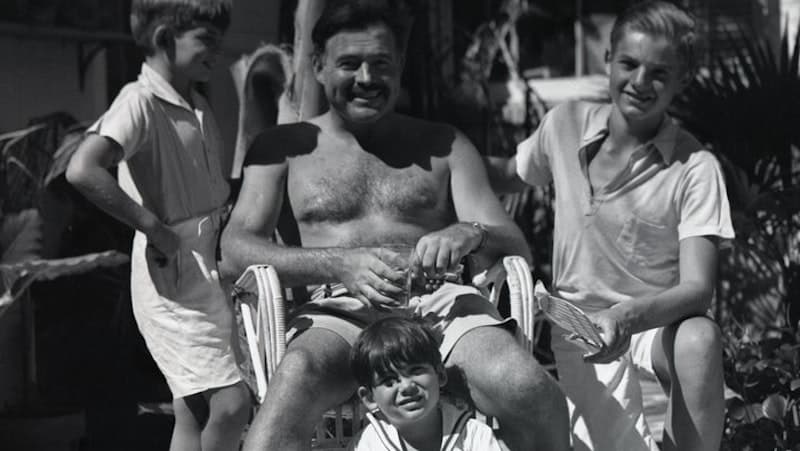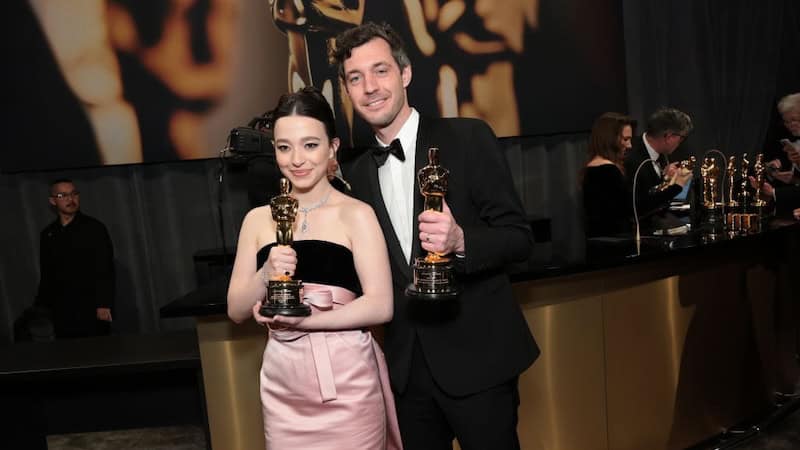Ken Burns and Lynn Novick’s ‘Hemingway’: TV Review
The documentary dissects the complicated life and myth of an iconic writer

Reviewer Kiko Martinez examines the Ken Burns’ documentary on ‘Papa’ Hemingway.
How impressive is Ken Burns as a documentarian? Think of it like this: In the 1980s, the Brooklyn-born filmmaker earned Oscar nominations for making compelling docs on the history of a pair of inanimate objects. Granted, “Brooklyn Bridge” and “The Statue of Liberty” were films on America’s strength and exceptionalism as much as they were on the landmarks themselves, but those early projects set Burns on a path to utilize the same kind of majestic storytelling to connect with human subjects, whether dead or alive.
From founding father and U.S. president Thomas Jefferson to celebrated humorist Mark Twain to the wrongly convicted Central Park Five, Burns builds on these legacies by also taking the pulse of the entire nation at the time through comprehensive reporting and a respect for the facts that might be skimmed over by other directors with less time to afford. Even when he was called out for initially not including any Latinos in his 2007 WWII TV miniseries “The War,” Burns did his best to correct the oversight, although some still felt adding half an hour to his 15-hour series was equivalent to an afterthought.
Ken Burns’ documentary on ‘Papa’ Hemingway
In his latest nonfiction production for PBS, Burns teams up with his longtime producer Lynn Novick to co-direct “Hemingway,” a three-part, six-hour documentary that chronicles the life of American novelist and Nobel- and Pulitzer Prize-winning literary icon Ernest Hemingway. It’s an extensive and wholly satisfying piece of cinema that gets to the core of the acclaimed writer by embracing all the intricacies that come with being such a conflicted figure.
In the film, narrated by Peter Coyote, Burns and Novick meticulously assemble Hemingway’s intimate saga, including with the writer’s own words, through excerpts of his distinct text that crack off the page like a bat connecting for a grand slam. “Hemingway” recruits actor Jeff Daniels to speak the words he wrote in his manuscripts and letters, delivering a refined reading: “I have always had the illusion that it was more important, or as important, to be a good man as to be a great writer. I may turn out to be neither but would like to be both,” he observes.
Burns tapped other high-profile narrators for the documentary to read correspondence between Hemingway and his four wives, including Meryl Streep, Patricia Clarkson, Keri Russell, and Mary-Louise Parker. Each of their oral contributions bring to life the various voices of those who were closest to Hemingway until he committed suicide in 1961 at the age of 61.
Covering a conflicted life
Episode 1, “A Writer,” which covers the years from 1899 to 1929, starts from Hemingway’s childhood in the suburbs of Chicago to his first job as a journalist in Kansas City. Hemingway then joins a Red Cross unit that is dispatched to Italy during WWI.
Surrounded by the casualties of war every day and getting seriously injured himself, Hemingway ended up falling for the nurse who cared for him – one of the many women he would love throughout his life. Through expert interviews with writers and literary scholars, Burns’ and Novick’s all-encompassing narrative goes far beyond the details of a conventional biography and into a sort of encyclopedic essay on the reasons Hemingway is considered one of the greatest wordsmiths ever. He also gives each episode the historical context needed to understand how he adapted in certain settings to create classic literature like “A Farewell to Arms” and “The Old Man and the Sea,” among other masterpieces.
The series dissects Hemingway’s work with care and curiosity. Episode 2, “The Avatar” (1929 to 1944) and Episode 3, “The Blank Page” (1944 to 1961), are equally as fascinating as Burns taps into the mythology Hemingway created about himself and his failing health in later years. To say Burns has captured all the nuance of Hemingway’s qualities and flaws as a human being is an understatement. The second part is the most captivating as it confronts the “holograph” that Hemingway invented for himself. Whether it was to keep people at a distance or to hide what some considered his deep faults, notably his reputation for drinking and womanizing, “Hemingway” never allows Hemingway himself to become one-dimensional. The depths it explores of Hemingway’s deep-seated solitude is what drives the documentary to its most sincere domains.
“Hemingway” is an engaging and beautifully constructed character study and proof that whatever Burns chooses to cover as a filmmaker will more than likely become the definitive documentary on that specific topic. In Hemingway’s case, it’s a story that is a lot more sensitive than one could’ve imagined.
For other war-related fiction, check out the books of Boomer writer David L. Robbins. Robbins has covered wars in his best-selling novels and supported military veterans in projects such as The Mighty Pen Project. He has also written numerous columns for Boomer magazine.



